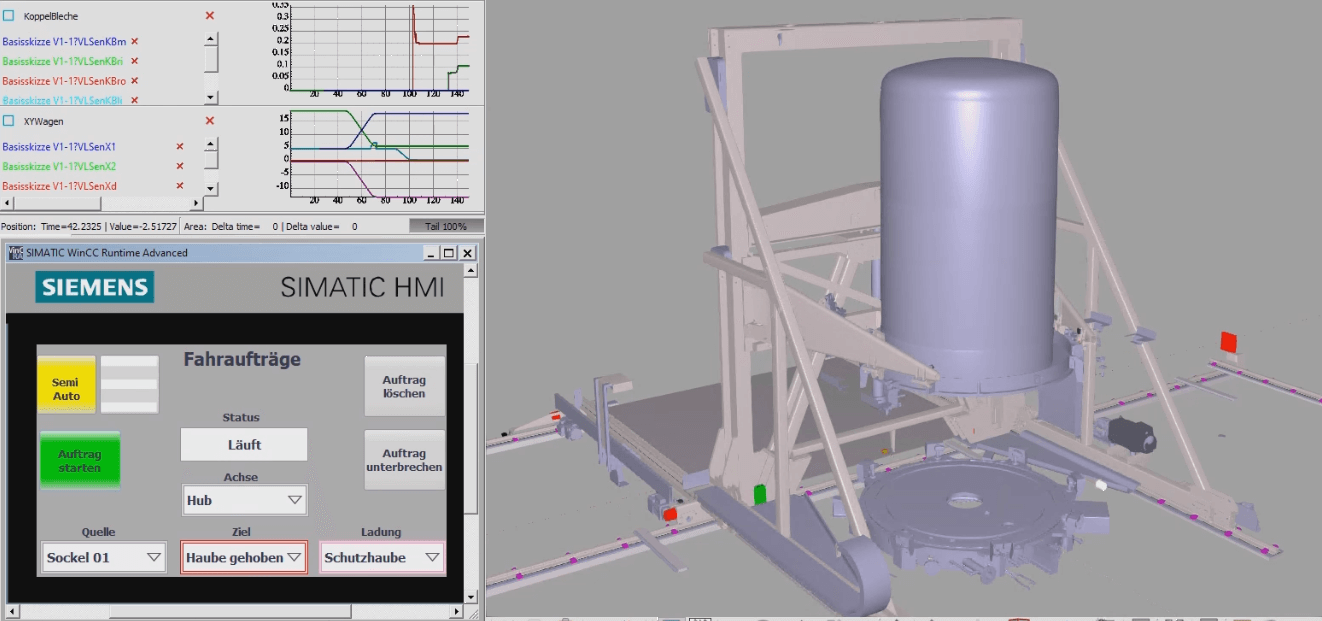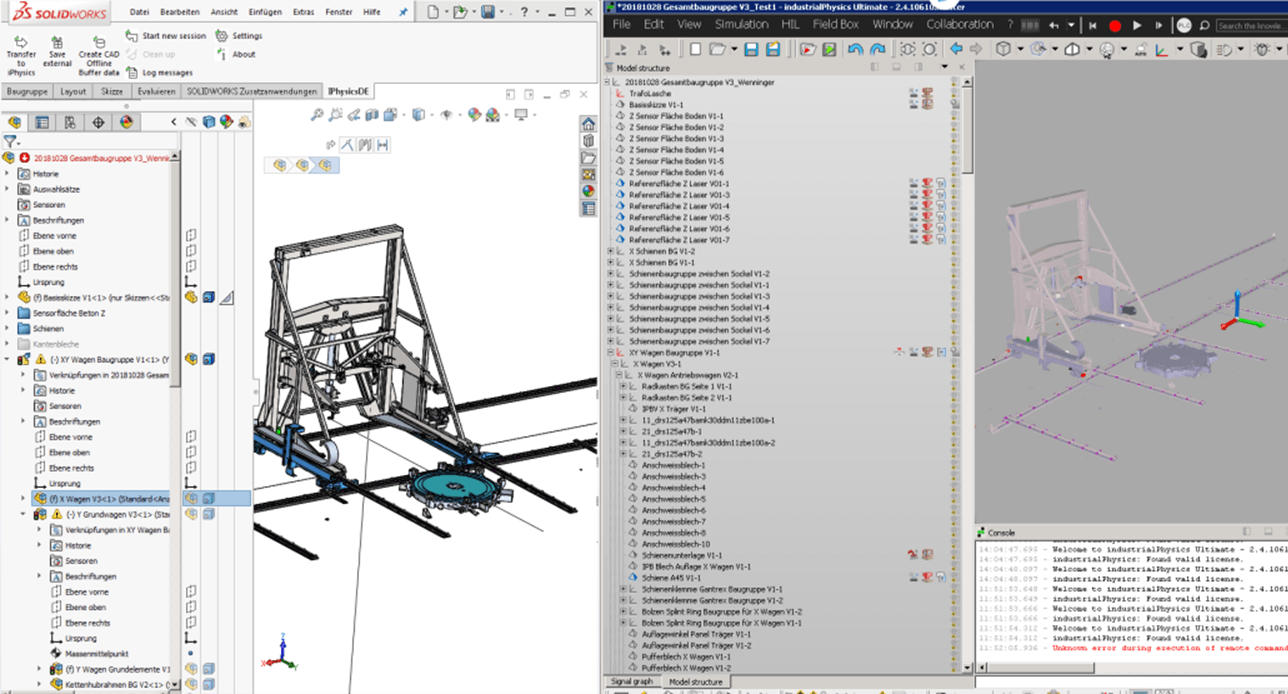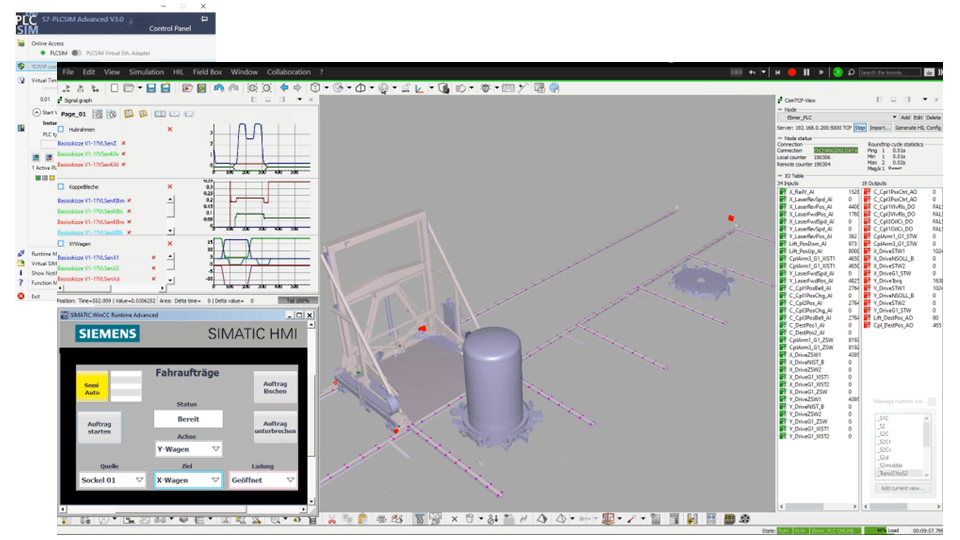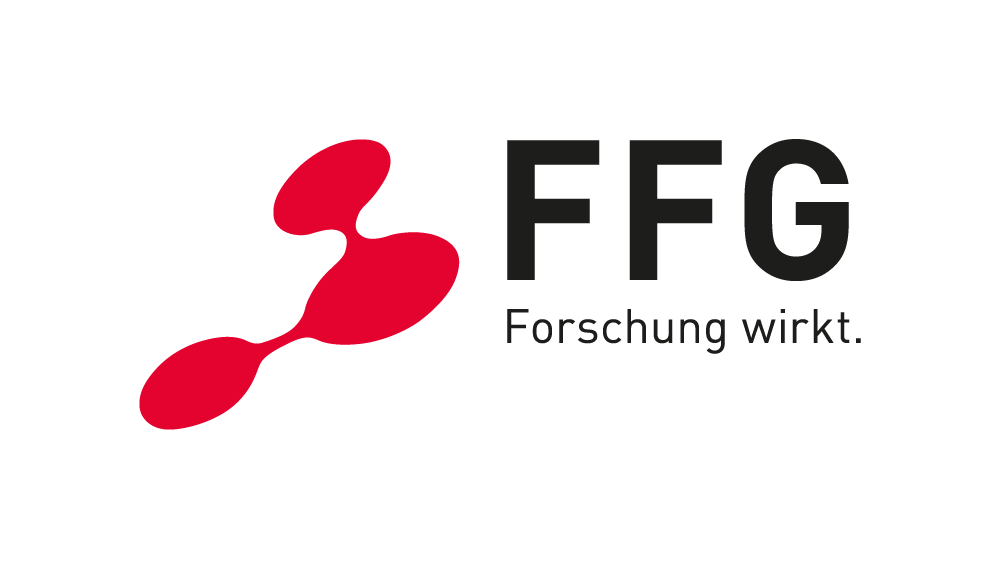Virtual Commissioning of a Charging Device

Virtual commissioning (VC) enables automation solutions to be tested in advance using a virtual image of the plant. Even if the plant is only under construction and therefore not yet available to the automation engineer, the implementation of the control software can be tested completely risk-free at a very early stage. Activities can thus be parallelized, which shortens development time and increases quality. But also delays on the construction site or in the procurement of required components can be cushioned by virtual commissioning.
Virtual Commissioning of a Charging Device
In a project with the company Ebner Industrieofenbau, the newly developed fully automated charging system of the bell annealer HICONSABER with LCM was virtually put into operation.
The iPhysics software from Machineering was used for this purpose. The coupling with common CAD tools allows the transfer of the plant geometry into the VC tool iPhysics at the push of a button and enables adjustments to be made without additional effort.

Figure: Transfer of the CAD data into the VC-tool.
After the kinematics of the individual axes and coupling arms of the charging device and the configuration of the laser distance sensors used in the virtual image, the first sequence simulations of the hood transport could be carried out quickly. The correct alignment of the sensors, axes and coupling arms could thus be checked in any configuration and when moving different hoods.
Coupling with the control
For communication with the controller, the required signals were prepared in iPhysics in the appropriate form and corresponding behavior models for the drives were embedded. Behavior models can either be selected from the available drive library or, as carried out by LCM in this project, implemented by the user to implement special functions.
The tool iPhysics provides the coupling with the VC controller compatible with all common controller manufacturers. The coupling was carried out with PLCSim Advanced from Siemens for this charging device. After the control code was loaded from the TIA Portal projecting environment to the PLCSim soft PLC and the virtual operator panel was started, the plant could be controlled with the same HMI operator view that was later used in reality.

Figure: Soft PLC PLCSim Advanced, virtual operator panel, virtual image of the charging device in the VC-tool.
The control of the virtual image of the plant was thus carried out with the control code that was also implemented on the real plant. Dependencies in the step chains, the interaction of different sensors, and the switching between different operating modes could hence be checked in detail in advance without having to rely on the availability of the real plant.

Figure: Detailed considerations of individual situations.
Benefits of Virtual Commissioning
The benefit of the virtual commissioning carried out with LCM was clearly evident in this project: a reduction of development time and costs. In the meantime, the bell annealer system HICONSABER from Ebner Industrieofenbau is running to the customer’s complete satisfaction. However, this is not the end of the use of the digital twin set up in this project. In subsequent projects, adaptations and extensions in design and software can be checked quickly and without risk, and plant operators can be trained.
For more information about virtual commissioning contact us directly.









